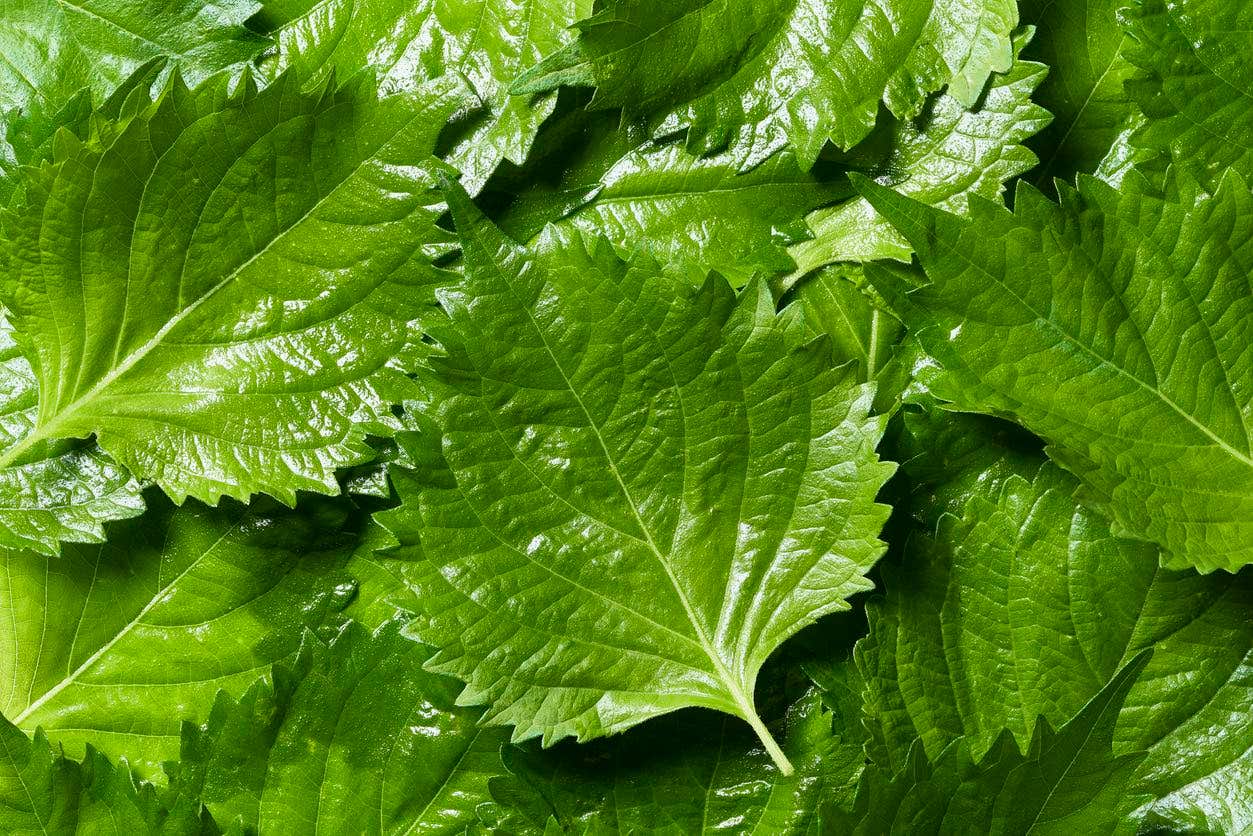
Meet Shiso, the Japanese Herb That Tastes Like Summer
If you love the bright, bold flavors of basil, mint, and cilantro, chances are you’ll be smitten with shiso, an aromatic herb that’s a mainstay in Japanese cuisine.
“Shiso can be a seasoning, a garnish, and even a coloring agent in Japanese cuisine,” says Julia Boucachard, founder of the Mori Café in Paris and author of Vegan Japan, who grew up splitting her time between Tokyo and France. “It’s enjoyed all over Japan.” .
Shiso is more widely available than ever, and it’s easy to grow at home during the warmer months. In this guide, you’ll learn how to shop for, cook with, and grow this distinctively delicious herb, with expert tips and ideas.
What Is Shiso?
Shiso, also called oba (green shiso), or beefsteak plant, is an annual herb in the mint family with large saw-toothed leaves that can be green, red (purple), or bi-color.
Are Shiso and Perilla the Same Thing?
Shiso is a variety of perilla, a plant used throughout Asia. In Korean cuisine, a broader-leaf perilla known as kkaennip (or “sesame leaf”) is a staple, featured in everything from pickled side dishes to stews to ssam (wraps). Compared with Japanese shiso, Korean perilla leaves are larger, thicker, and have a slightly grassier, anise-like flavor.
Flavor Notes
When American chefs first started incorporating shiso into their cooking 30 years ago, New York Times writer Mark Bittman described the herb’s aroma as “the smell of a mountain meadow after a rainstorm.” While this may not be much help to the cook who has never tasted it, the lettuce-crisp leaves definitely have an earthy, fragrant quality that’s hard to define in terms of other flavors.
Tim Anderson, the author of Vegan JapanEasy, describes shiso’s taste as “something like a mix of basil, mint, and clove.” Boucachard calls it “fresh, fruity and slightly citrusy,” adding that red shiso tends to be milder, with more prominent hints of basil.
Red shiso is the type that’s used to color salty-sweet umeboshi plums. It’s also a common ingredient in furikake, a dried seasoning blend for rice. One thing to keep in mind when working with red shiso: “It will turn everything it touches purple,” warns Anderson. “This is desirable in some cases but not in others.”
Shopping and Storage
Shiso can be found year-round in Asian grocers, well-stocked supermarkets, and, increasingly, at farmers markets in the warmer months. When buying shiso, look for vibrant leaves that don’t appear papery and have no signs of browning or discoloration. For the best flavor, Boucachard recommends choosing shiso bunches with large, mature leaves instead of smaller sprigs.
The most important thing when storing shiso is to keep the leaves dry so they don’t begin to blacken and deteriorate. Place them in a resealable storage bag or an airtight container and store in the fridge for 5 to 7 days. Or, if you’re going to use them within the next two days, you can place them upright in a glass of water like you would cut flowers, making sure to keep the water level slightly lower than the stem length, so as not to wet the leaves.
Grow Your Own
One of the best ways to source fresh shiso is to grow it yourself, in an indoor or outdoor herb garden, with full sun or partial shade. If growing indoors, sow seeds in early spring; if outdoors, wait until after the last frost. Press seeds lightly into moist soil and keep them warm (around 70–75°F) and consistently damp until they sprout. Once the plant reaches about 6 inches tall in summer, you can start harvesting: Pinch or cut off part of the stem with leaves just above a leaf node with new growth. The plant will die with the first frost, but you’ll likely never need to replant it: Although technically annuals, shiso plants are prolific and often reseed themselves after they die back (like basil) in the fall.
Cooking with Shiso
Like basil and mint, shiso is best used raw or only lightly cooked; the leaves turn black and can be bitter when exposed to extended heat.
In Japan, chopped or chiffonaded shiso is a regular addition to rice, noodles, salads, pickles, and salad dressings and dips. A tablespoon or two of chopped shiso can turn plain steamed rice into a fragrant side dish or add incredible flavor to a vinaigrette.
“Shiso can be used wherever you would ordinarily use mint or basil,” says Anderson. “I love it in a simple salad with grilled peaches and it can be torn or chopped and tossed with pasta as well.”
8 Easy Ways to Use Shiso
You don’t need a special recipe to get started cooking with shiso. Here are a few easy ideas to try.
- Stir chopped shiso into steamed rice or grains.
- Use in place of nori for onigiri.
- Garnish hot and cold soups with chiffonaded shiso.
- Chop and sprinkle shiso over sliced tomatoes or cucumbers.
- Add whole leaves to sandwiches in place of lettuce.
- Stir chopped green shiso into bean and grain dishes.
- Substitute for basil in pesto.
- Blend 2 or 3 leaves into creamy dips and salad dressings.
- Add a leaf or two of red shiso to pickle recipes for color and flavor.
About the Author

About the Author
Mary Margaret Chappell
Join our mailing list
Get free recipes and the latest info on living a happy, healthy plant-based lifestyle.
By providing your email address, you consent to receive newsletter emails from Forks Over Knives. We value your privacy and will keep your email address safe. You may unsubscribe from our emails at any time.
